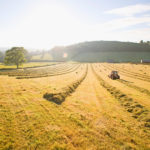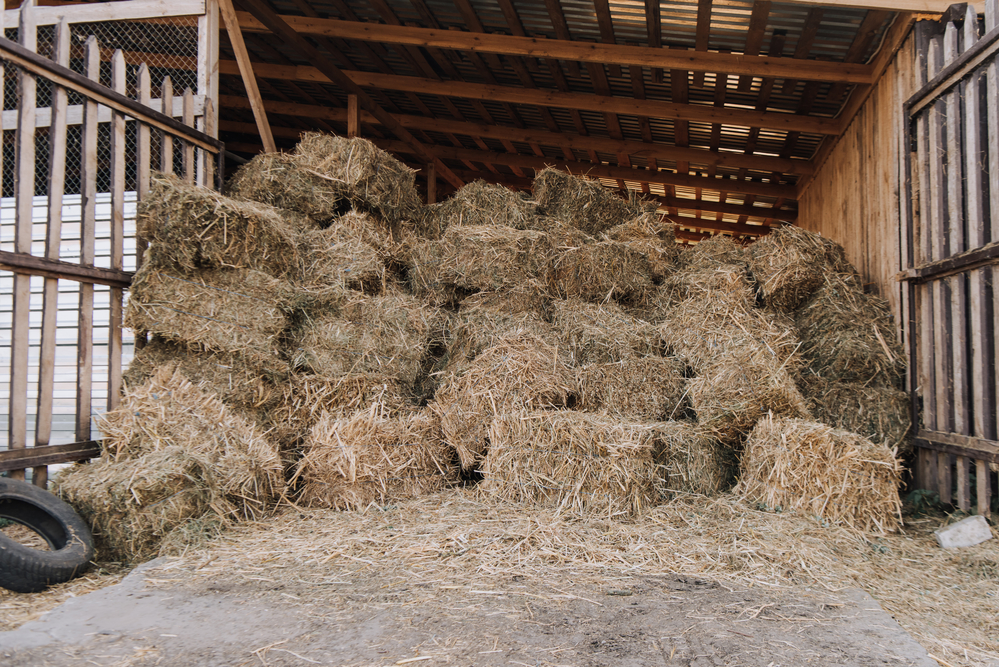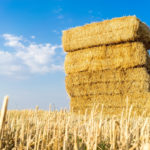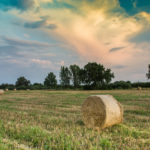It is vital for the success of your hay for it to stay dry and protected from the winter weather. Wet hay will mold and spoil when it isn’t able to dry out. That is not a scenario that you want to happen. Financially, it can have a significant impact on you if that happens. The good thing is Western Packaging has the options you need to help keep your hay dry. Let’s see what the best option is.
How Do You Keep Hay Dry?
Uncovered hay can lead to dry matter losses and decreased quality. Hay bleached by the sun loses valuable nutrition, including vitamin A and protein. Water-soluble nutrients, like carbohydrates, can also leach from the hay. Additionally, nitrates can become concentrated in lower bales, creating a potentially toxic feed for animals.
Your main goal over the winter months is to minimize hay quality and quantity losses. This can be achieved by reducing its exposure to winter elements and precipitation. Indoor hay storage should be well-ventilated structures like barns, sheds, or pole structures. However, only some have indoor storage options. Therefore, alternative methods to reduce exposure to elements are needed.
Protecting Your Product And Bottom Line
There are a few options when it comes to protecting your hay bales. The best choice for you will depend on your budget, the amount of hay you produce, and the available storage room you have. Some of the ways that you can protect your hay from winter weather are:
- Hay Sleeves
- Tarps
- Elevate Hay Off The Ground
- Covered Storage Space
The main key to protecting your investment is to have adequate measures in place to keep your hay dry. When hay is kept off of the ground, allowing airflow underneath, you have a better chance of it drying. Your best option for hay that is stored outside is to use hay sleeves.
What Are Hay Sleeves?
A hay sleeve is a product specifically designed to protect your hay from many different elements. The rain, sun, snow, critters, and other things can cause damage to your hay. Hay sleeves are an added cost, but they can save you money as well.
This product also reduces the amount of hay that can be lost from moving the hay bales. Little bits and pieces will fall in the process of moving them. With a sleeve, that doesn’t happen. The makeup of the hay sleeves is designed with a breathable design. This allows air to flow through them.
Proper Storage And Managing Moisture
Storing bales on bare ground can cause a 5-20% loss. And that number can quickly add up. Losses like this can occur suddenly and without warning. Even if the soil beneath your bales is not moist, the surrounding soil still may be. The surrounding soil will leach into the ground beneath your unprotected bales. And eventually, your bales will become riddled with mold, destroying your product and wasting your efforts.
This issue can also occur on concrete floors, as concrete absorbs moisture well, making it important to consider this even if the hay is stored under a shelter. Therefore, storing the hay off the ground is crucial to prevent potential issues. Elevate hay using various materials such as racks, fence posts, pallets, railroad ties, tires, or a layer of rock.
Proper Winter Bale Arrangement
Not all farmers will have a barn to store their hay bales through the winter months. That’s okay. Hay storage can be done without a barn by stacking bales in pyramid shapes, allowing air circulation, and protecting them from rain and weather elements. Hay tarps and sleeves can also be employed to ensure the hay stays dry and retains its nutritional value.
Butted end-to-end in long rows, round bales are best stored on the twine or wrap side. Be sure you orient the rows north and south to allow sunlight for drying. This will also help prevent prevailing winds from creating snow drifts. Avoid arranging them in a row with twine/wrap sides touching, creating a water-absorbing valley. Leave at least 2 feet between bales and space adjacent rows at least 3 feet apart if you absolutely must store your bales side-by-side.
A Few Tips To Store Hay In The Winter
The number one thing to keep in mind when storing hay for winter is for it to be dry. The hay, the tarp or plastic you are using, and the area. Keep the hay in an area that is covered if that is an option for you. If not, then do your best to cover it with hay sleeves or tarps.
A few additional tips are:
- Ventilation- The hay needs to be able to breathe. Keep it off the ground and do not stack one on top of the other.
- Pack Loosely- Don’t pack down the hay bales. Allow them to loosely sit by one another.
- Keep A Close Eye- Don’t get it all set up and forget about it. Do routine checks on the hay and the area to make sure it is keeping dry. Regular monitoring will help you spot trouble from pests, moisture, or mold before it gets too serious. If you catch a problem early, you have the chance to rectify it.
- Rotate Hay Regularly – this will help to prevent compression and maintain quality. High-quality stored hay leads to healthier livestock during winter months.
Sort Your Bales By Quality
When storing your hay bales, be sure to allow easy access to the older hay. This may cost you a little time to perform, but will save you money in the long run. Feeding the old hay first helps you to prevent it from spoiling before it can be used. By effectively planning and stacking your hay bales, your hay will last longer, and your losses will be minimal.
How Long Will Hay Bales Last?
If you can provide your hay bales with adequate storage in a dry place, they can last up to 3 years. To ensure that the hay you are feeding your herd is safe, give them a proper inspection. Don’t automatically think that hay from last year or the year before is bad. That is a good investment that you made. Use all of it that you can.
If you don’t see any signs of mold or spoilage, and it is within one to three years old, you should be okay to use it. However, if you aren’t sure about the quality of the hay, you should probably have it tested.
Contact Western Packaging Today
Are you needing advice on how to keep your hay bales dry this winter? Call Western Packaging now for help, ask us more questions, and get more information. Our team would love to help you protect your investment. We look forward to working with you very soon!






Sorry, the comment form is closed at this time.